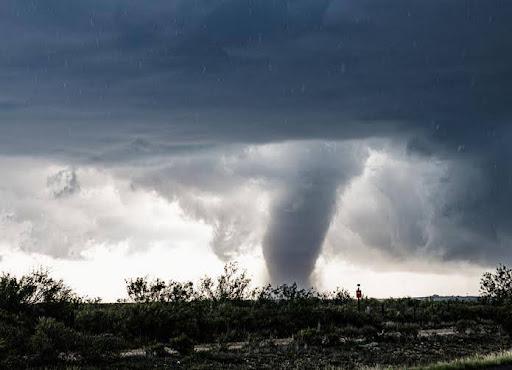When Is Tornado Season?
July 15, 2024

Tornados are one of the most devastating weather events Mother Nature throws our way.
A 2011 tornado in Joplin, Missouri resulted in 161 deaths, over 1,000 injuries, and billions of dollars in damage. Two years later, a tornado in Moore, Oklahoma caused 24 deaths and destroyed hundreds of homes and public buildings, including schools.
The impact of tornado damage underscores the importance of emergency preparedness, early warning systems, and restoration and recovery in the aftermath of these storms. Let’s look at the timing of tornado season, where tornados occur, and the process of storm damage restoration.
Understanding Tornado Season
During tornado season, meteorological conditions such as warm, moist air from the Gulf of Mexico meeting cold, dry air from the Rockies are most conducive to the formation of severe thunderstorms, which can spawn tornados. That’s why it’s so important to monitor the forecast during these times to mitigate the risks that come along with these destructive storms.
Tornados are classified into different categories based on their intensity, primarily using the Enhanced Fujita (EF) Scale, which ranges from EF0 to EF5. This scale measures the estimated wind speeds and the resulting damage caused by tornados. Here’s a breakdown of each category:
EF0 (Weak)
- Wind Speed: 65-85 mph
- Damage: Light damage to trees, roofs, and siding. Some damage to chimneys and TV antennas.
EF1 (Weak)
- Wind Speed: 86-110 mph
- Damage: Moderate damage, including roof loss, mobile homes overturned, and large trees snapped or uprooted.
EF2 (Strong)
- Wind Speed: 111-135 mph
- Damage: Considerable damage, such as roofs torn off houses, large trees snapped or uprooted, and mobile homes demolished.
EF3 (Strong)
- Wind Speed: 136-165 mph
- Damage: Severe damage, including entire stories of well-constructed houses destroyed, large buildings shifted off foundations, and bark ripped off trees.
EF4 (Violent)
- Wind Speed: 166-200 mph
- Damage: Devastating damage, with houses leveled, lots of debris scattering, and cars thrown significant distances.
EF5 (Violent)
- Wind Speed: >200 mph
- Damage: Incredible damage, including steel-reinforced concrete structures reduced to rubble, high rises heavily damaged, and cars thrown more than a quarter of a mile.
How long do tornados last? Most tornados are short-lived, lasting less than 10 minutes. However, some can last for much longer, even up to an hour or more in rare cases.
Tornado Season Geography
Tornado season typically refers to the time of year when tornados are most frequent and severe, and this varies depending on the region.
Here’s what tornado season looks like in different parts of the United States:
- Southern Plains (Texas, Oklahoma, Kansas): Peak tornado activity is from late April to early June.
- Gulf Coast (Louisiana, Mississippi, Alabama): Tornados are common earlier in the spring, from February to April.
- Northern Plains and Upper Midwest (North Dakota, Minnesota, Wisconsin): Peak tornado season is from June to July.
- Southeast (Florida, Georgia, South Carolina): While tornados can occur year-round, there's a secondary peak in the fall.
The Federal Emergency Management Agency (FEMA) has created a map outlining communities’ Tornado Risk Index scores and ratings representing relative risk for tornados when compared to the rest of the United States.
Tornado Damage and Its Impact
Tornado damage can have extensive and severe impacts on both people and property. As we saw happen in Joplin and Moore, tornados can cause fatalities and serious injuries, often due to flying debris and collapsing structures.
Tornados can destroy buildings, homes, schools, and businesses, often leaving behind little more than foundations. Power lines, water supplies, and gas lines can be severed, causing widespread outages and potential hazards such as gas leaks. Tornados can also disrupt transportation. Roads, bridges, and railways can be damaged or blocked by debris, hampering rescue and relief efforts.
The economic impact of tornados can be serious, too. Damage to personal and commercial property can result in substantial financial losses, and in some cases local businesses may be forced to close. Significant resources are usually required to rebuild areas that have been hit by major tornados, which can strain local and national economies.
Recovery After Tornado Damage with DRYmedic
DRYmedic Restoration is your go-to source for storm damage restoration, including damage that results from tornados. We have helped homeowners recover from hurricanes, tornados, floods, hail damage, and more. We’ll help you recover and restore your property, no matter how strong the storm was. If you’ve been impacted by a tornado, call us today: (754) 206-6436